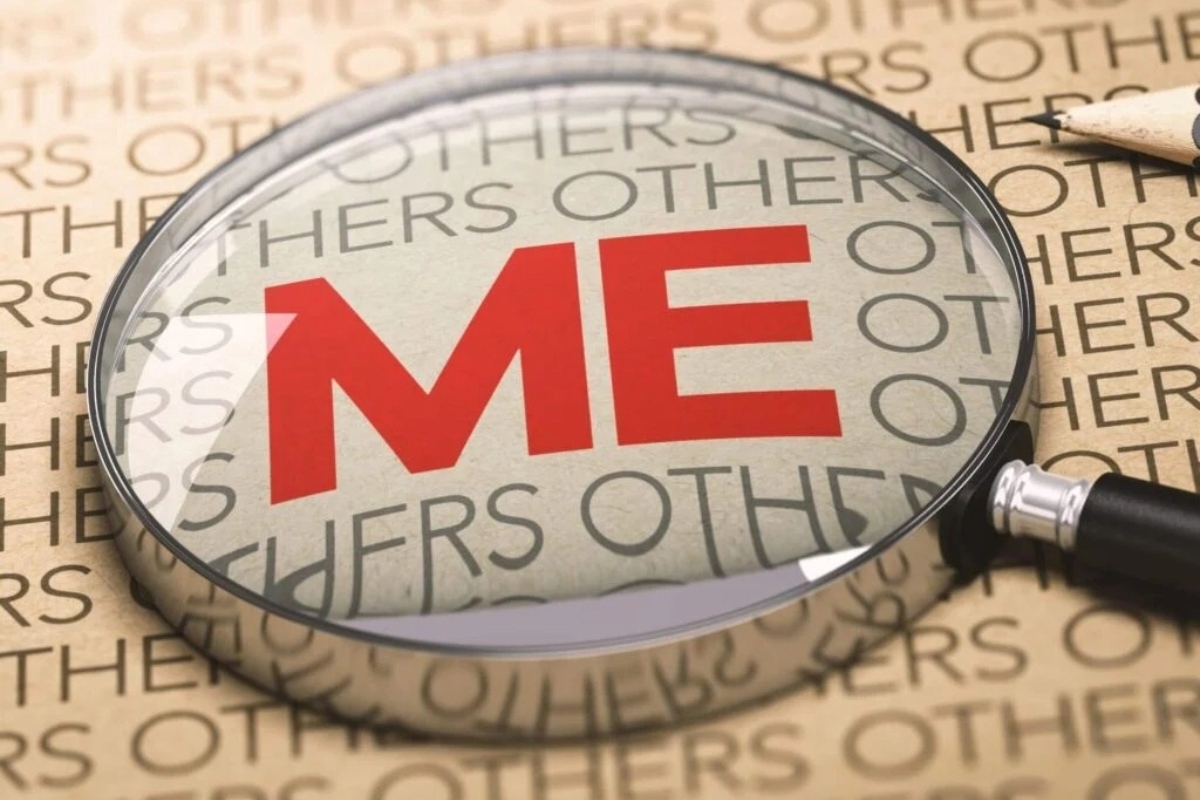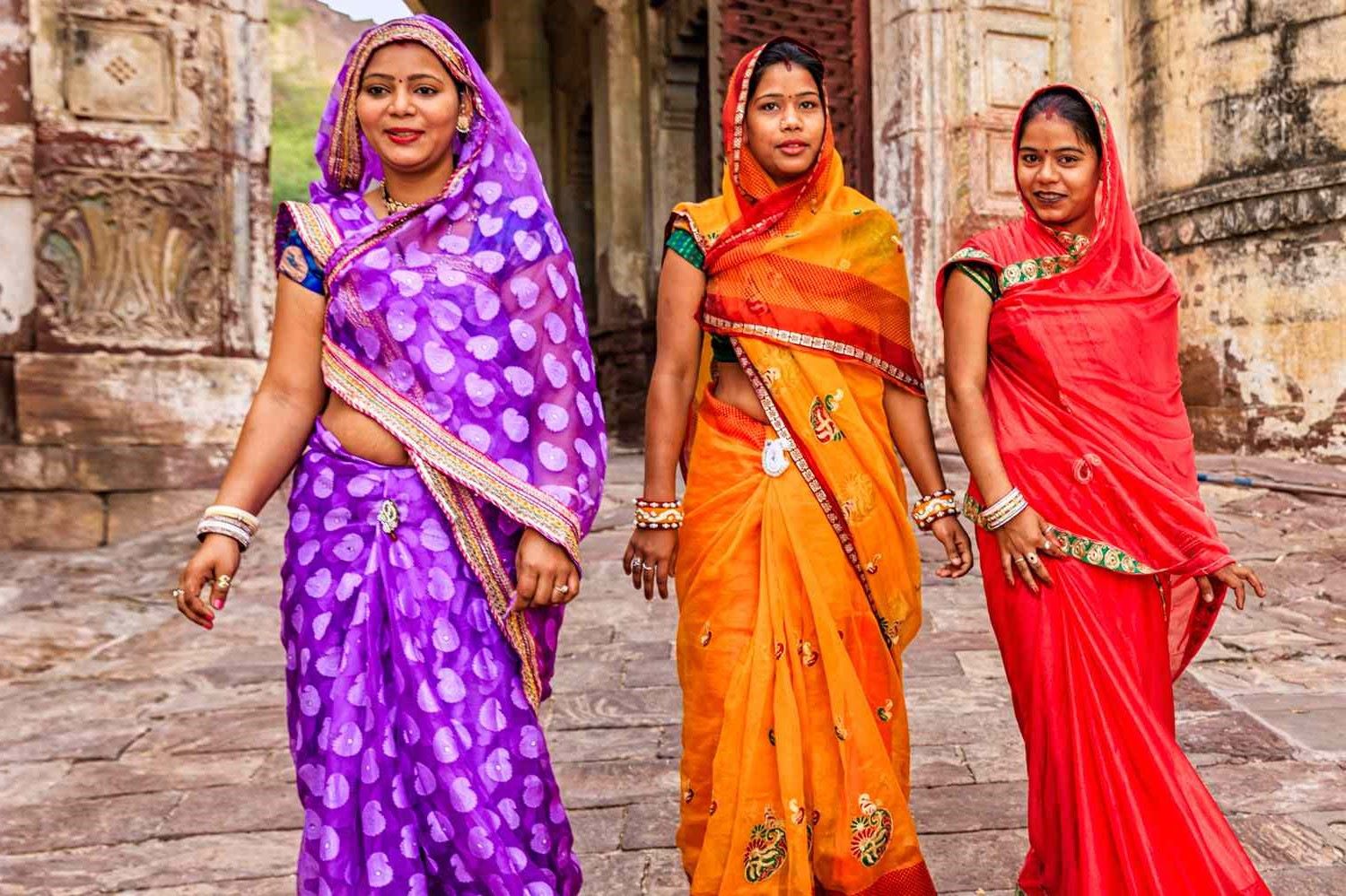Home>Arts and Culture>Is It Appropriate For A Caucasian Person To Wear A Traditional Mexican Chiapas Dress?


Arts and Culture
Is It Appropriate For A Caucasian Person To Wear A Traditional Mexican Chiapas Dress?
Published: January 4, 2024
Explore the cultural significance of wearing traditional Mexican Chiapas dress and understand the nuances of cultural appropriation in arts and culture. Find out more about the intersection of ethnicity and fashion.
(Many of the links in this article redirect to a specific reviewed product. Your purchase of these products through affiliate links helps to generate commission for Noodls.com, at no extra cost. Learn more)
Table of Contents
Introduction
The topic of cultural appropriation has sparked widespread discussions and debates in recent years, prompting individuals to consider the implications of adopting elements from cultures that are not their own. At the heart of this complex and sensitive issue lies the question of whether it is appropriate for a Caucasian person to wear a traditional Mexican Chiapas dress. This inquiry delves into the broader conversation surrounding cultural exchange, respect for traditions, and the impact of globalization on heritage.
Cultural appropriation, a term that has gained prominence in social and academic discourse, refers to the act of borrowing or adopting elements of a culture by individuals who do not belong to that cultural group. This can encompass various forms of expression, including fashion, music, art, and traditions. While cultural exchange has historically played a pivotal role in shaping societies and fostering understanding between diverse communities, the concept of appropriation raises crucial considerations about power dynamics, historical context, and the potential erasure of cultural significance.
In the context of the traditional Mexican Chiapas dress, it is essential to appreciate its profound cultural significance within the indigenous communities of Mexico. The vibrant and intricately woven garments hold deep-rooted symbolism, reflecting the heritage, beliefs, and craftsmanship of the indigenous peoples in the region. These garments are not merely pieces of clothing; they embody centuries of tradition, storytelling, and resilience, serving as a tangible expression of cultural identity and pride.
As we navigate the complexities of cultural appropriation and the ethical implications of cross-cultural fashion choices, it is imperative to approach this discourse with empathy, open-mindedness, and a willingness to engage in meaningful dialogue. By exploring the multifaceted layers of this issue and considering diverse perspectives, we can gain a deeper understanding of the impact of our actions and choices on cultural heritage and identity. The exploration of the appropriateness of wearing a traditional Mexican Chiapas dress extends beyond a simple fashion decision; it invites us to reflect on our roles as global citizens and the significance of honoring and preserving diverse cultural traditions.
Understanding Cultural Appropriation
Cultural appropriation, a concept that has garnered widespread attention in contemporary discourse, encompasses the adoption or use of elements from a culture by individuals who do not belong to that cultural group. It involves the borrowing of symbols, practices, or artifacts from a marginalized or minority culture by members of a dominant or privileged group. This phenomenon raises complex questions about power dynamics, respect for cultural heritage, and the impact of globalization on traditional practices.
At the heart of cultural appropriation lies the imbalance of power and the historical context in which these exchanges occur. It often occurs within a framework of inequality, where dominant cultures have historically oppressed or marginalized the very traditions and practices they seek to adopt. This dynamic creates a disparity in the treatment of cultural elements, as certain groups are subjected to discrimination and stereotyping while others are able to freely appropriate and commercialize aspects of their culture for personal gain or trendiness.
Moreover, cultural appropriation can lead to the commodification of sacred or deeply meaningful cultural practices, reducing them to mere fashion trends or commodities. This process can result in the erasure of the original cultural significance and the perpetuation of harmful stereotypes. It is essential to recognize that cultural elements are not isolated artifacts; they are imbued with historical, spiritual, and communal meanings that must be approached with reverence and understanding.
While cultural exchange and cross-cultural inspiration have the potential to foster understanding and appreciation between diverse communities, the distinction between appropriation and appreciation lies in the acknowledgment of the origins and significance of the borrowed elements. Respectful engagement with cultural practices involves honoring their roots, understanding their context, and seeking permission or collaboration with the communities from which they originate.
As we navigate the complexities of cultural appropriation, it is crucial to approach these discussions with sensitivity and empathy. By understanding the power dynamics at play and the historical context in which these interactions occur, we can cultivate a more nuanced and respectful approach to engaging with diverse cultural traditions. This awareness can contribute to a more inclusive and equitable cultural landscape, where the voices and narratives of marginalized communities are honored and celebrated without exploitation or misrepresentation.
The Significance of the Chiapas Dress
The Chiapas dress, also known as the "traje" or traditional attire of the indigenous women in the Mexican state of Chiapas, holds profound cultural and symbolic significance within the indigenous communities of the region. These vibrant and meticulously crafted garments serve as visual manifestations of the rich heritage, beliefs, and traditions of the indigenous peoples, reflecting centuries of cultural resilience and artistic expression.
The Chiapas dress is distinguished by its intricate embroidery, vibrant colors, and distinctive designs, each of which carries deep-rooted symbolism. The elaborate motifs woven into the fabric convey narratives of the natural world, spiritual beliefs, and ancestral wisdom, encapsulating the collective identity and history of the indigenous communities. Every stitch and pattern is imbued with meaning, representing a profound connection to the land, the cosmos, and the enduring spirit of the indigenous peoples.
Beyond its aesthetic allure, the Chiapas dress plays a pivotal role in preserving and transmitting cultural knowledge across generations. The process of creating these garments involves meticulous craftsmanship, often passed down through oral tradition and hands-on apprenticeship. The intricate embroidery techniques, color combinations, and motifs are steeped in tradition, embodying a living heritage that transcends time and serves as a testament to the resilience and creativity of the indigenous artisans.
Moreover, the Chiapas dress serves as a visible marker of identity and belonging within the indigenous communities. Through the distinct patterns and styles of the attire, individuals express their affiliation with specific communities, social roles, and stages of life. The garments worn by women in different regions and villages of Chiapas reflect unique local variations, reflecting the diversity and complexity of indigenous cultural practices and beliefs.
The Chiapas dress is not merely a garment; it is a repository of cultural memory, a form of artistic expression, and a symbol of resilience in the face of historical challenges. Its significance extends beyond the realm of fashion, encompassing spirituality, social cohesion, and the preservation of indigenous knowledge. By understanding the profound cultural significance of the Chiapas dress, we gain insight into the intricate tapestry of indigenous traditions and the enduring legacy of the indigenous communities in Chiapas.
The Debate on Cultural Appropriation
The debate on cultural appropriation has ignited impassioned discussions within academic, social, and cultural spheres, reflecting the complexities and nuances inherent in the exchange of cultural elements. At its core, the debate revolves around the ethical implications of adopting and repurposing cultural practices, symbols, and artifacts from marginalized or minority communities. This multifaceted discourse encompasses diverse perspectives, ranging from staunch criticism of cultural appropriation to nuanced examinations of cross-cultural exchange.
Critics of cultural appropriation argue that the act of borrowing or commodifying elements from a culture without understanding or respecting their significance perpetuates historical power imbalances and reinforces stereotypes. They emphasize the need for cultural sensitivity, accountability, and the recognition of the historical context in which these exchanges occur. From this vantage point, cultural appropriation is viewed as a form of exploitation that diminishes the lived experiences and traditions of marginalized communities, often leading to the erasure of their voices and agency.
Conversely, proponents of cultural exchange argue that creative and artistic expression should not be confined by cultural boundaries, advocating for the free flow of ideas and influences across diverse traditions. They highlight the potential for cross-cultural interactions to foster understanding, appreciation, and innovation, transcending barriers and enriching the global cultural tapestry. This perspective emphasizes the transformative nature of cultural fusion and the capacity for shared artistic expressions to bridge cultural divides and cultivate empathy.
The debate on cultural appropriation prompts critical reflections on the complexities of identity, power dynamics, and the ethical responsibilities of creators and consumers in a globalized world. It underscores the importance of engaging in meaningful dialogue, amplifying marginalized voices, and fostering mutual respect and understanding across cultural boundaries. By navigating this discourse with empathy and open-mindedness, individuals and communities can strive to strike a balance between honoring cultural heritage and embracing the dynamic, interconnected nature of human expression.
In essence, the debate on cultural appropriation invites us to grapple with the ethical implications of cultural exchange, urging us to consider the impact of our actions on diverse communities and the imperative of cultivating a more inclusive and equitable cultural landscape. This ongoing conversation challenges us to navigate the complexities of cultural appropriation with sensitivity and introspection, fostering a deeper appreciation for the diverse tapestry of human creativity and heritage.
The Perspective of the Mexican Community
The perspective of the Mexican community regarding the appropriation of the traditional Chiapas dress by individuals outside their cultural milieu is multifaceted, reflecting a rich tapestry of historical, social, and personal experiences. Within the Mexican community, particularly among indigenous groups in Chiapas, the Chiapas dress holds profound cultural and symbolic significance, serving as a tangible embodiment of their heritage, identity, and resilience. The indigenous communities view the Chiapas dress as a sacred and integral aspect of their cultural identity, representing centuries of tradition, craftsmanship, and storytelling.
For many members of the Mexican community, the Chiapas dress is not merely a garment; it is a living symbol of their connection to the land, their ancestors, and their collective memory. The intricate embroidery, vibrant colors, and unique designs encapsulate narratives of the natural world, spiritual beliefs, and communal wisdom, reflecting the enduring spirit of the indigenous peoples. The act of wearing and creating these garments is deeply intertwined with cultural pride, communal belonging, and the preservation of ancestral knowledge, serving as a form of resistance against historical marginalization and cultural erasure.
From the perspective of the Mexican community, the appropriation of the Chiapas dress raises complex emotions and concerns. While there is a recognition of the beauty and artistry of the garment, there is also a deep-seated apprehension about the potential trivialization or misrepresentation of its cultural significance. The indigenous communities express a desire for their traditions to be honored, respected, and understood within their historical and social contexts. They emphasize the importance of acknowledging the origins of the Chiapas dress and engaging in meaningful dialogue with the indigenous artisans and communities who have safeguarded these traditions for generations.
Furthermore, the perspective of the Mexican community underscores the significance of agency and representation in the discourse surrounding cultural appropriation. Indigenous voices and narratives are central to the conversation, highlighting the need for mutual respect, collaboration, and the amplification of indigenous perspectives. There is a call for genuine engagement and reciprocity, where individuals outside the community approach the Chiapas dress with reverence, seek informed consent, and actively support the preservation of indigenous cultural heritage.
In essence, the perspective of the Mexican community illuminates the intricate layers of emotion, pride, and concern surrounding the appropriation of the Chiapas dress. It invites individuals to approach this discourse with humility, empathy, and a willingness to listen to and honor the voices of the indigenous communities. By embracing a stance of respect and collaboration, individuals can contribute to a more equitable and inclusive cultural landscape, where the traditions and legacies of the Mexican community are celebrated and safeguarded for generations to come.
Conclusion
The discourse surrounding the appropriateness of a Caucasian person wearing a traditional Mexican Chiapas dress encapsulates the intricate complexities of cultural exchange, respect for heritage, and the ethical considerations inherent in cross-cultural fashion choices. This multifaceted conversation invites individuals to navigate the nuances of cultural appropriation with empathy, introspection, and a commitment to honoring diverse traditions.
At its core, the debate on cultural appropriation underscores the imperative of understanding the historical context and power dynamics that shape these interactions. It prompts us to recognize the profound significance of the Chiapas dress within the indigenous communities of Mexico, serving as a visual testament to their resilience, cultural identity, and artistic heritage. The vibrant embroidery, symbolic motifs, and ancestral narratives woven into the fabric of the Chiapas dress represent centuries of tradition, spirituality, and communal wisdom, embodying a living connection to the land and the cosmos.
The perspectives of the Mexican community, particularly the indigenous groups in Chiapas, shed light on the deep-seated cultural pride, concerns, and aspirations surrounding the Chiapas dress. Their voices emphasize the importance of respectful engagement, informed consent, and collaborative support for the preservation of indigenous cultural heritage. This underscores the significance of amplifying marginalized voices, fostering mutual respect, and cultivating a more inclusive and equitable cultural landscape.
In navigating the complexities of cultural appropriation, individuals are called to approach cross-cultural fashion choices with mindfulness, humility, and a willingness to engage in meaningful dialogue. By acknowledging the origins and significance of cultural elements, seeking informed consent, and supporting the voices of marginalized communities, individuals can contribute to a more respectful and harmonious cultural exchange.
Ultimately, the appropriateness of wearing a traditional Mexican Chiapas dress extends beyond a mere fashion decision; it encapsulates the ethical responsibilities of individuals as global citizens. It invites us to honor and preserve diverse cultural traditions, amplify marginalized voices, and foster a more inclusive and equitable cultural landscape. By embracing a stance of empathy, respect, and collaboration, we can navigate the complexities of cultural appropriation and contribute to a world where cultural heritage is celebrated, safeguarded, and cherished for generations to come.














